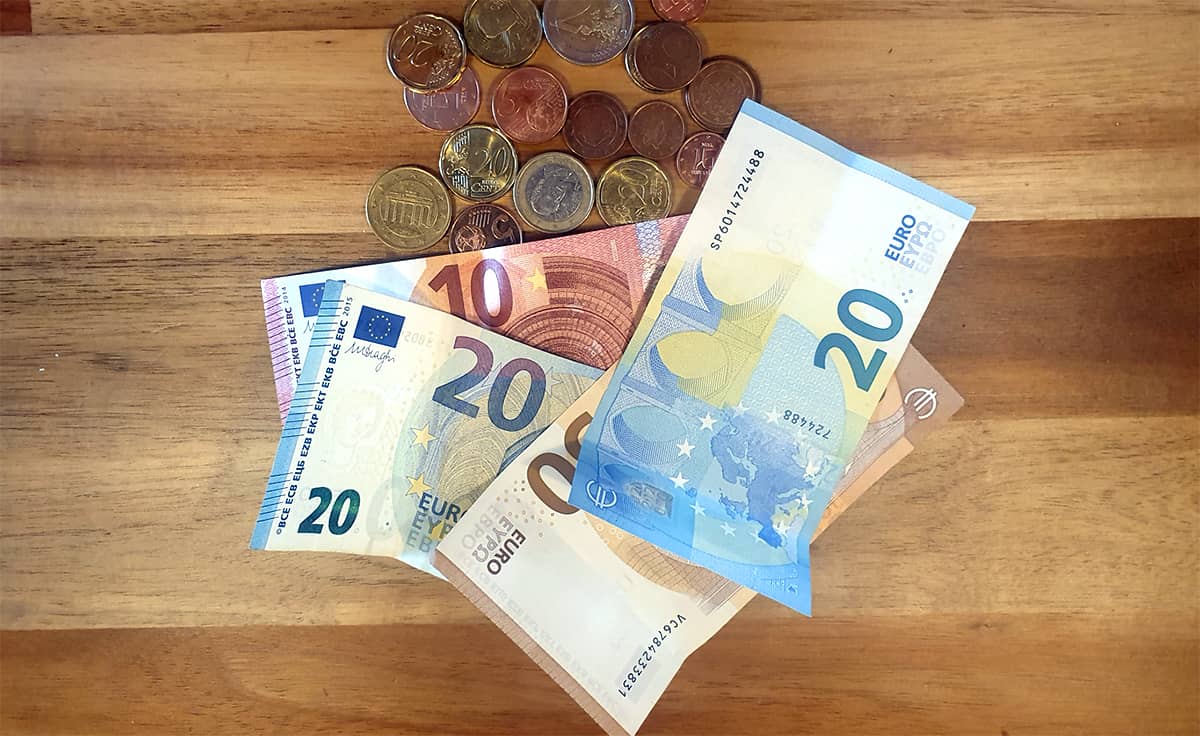Croatia is a member of the European Union and uses euro (EUR) as its common currency. As of 1 January 2023 the Euro is the only legal tender in the country, replacing the Kuna.
Euro banknotes (sign: €; code: EUR) are available in denominations of 5, 10, 20, 50, 100, and 200, while coins are available in denominations of 1 and 2 euros, and 1, 2, 5, 10, 20, and 50 cents.
Design of Croatian euro coins
Croatia has its own series of coins with motifs symbolising its history, tradition, recognition, and culture. The Croatian checkerboard is featured on the background of minted coins, and the HR abbreviation is displayed on the 1, 2, and 5 cent coins in the oldest Slavic script.
Nikola Tesla is displayed on the 10, 20, and 50 cent coins, while a mink is featured on the 1 euro coin as a symbol of monetary tradition dating back to the 13th century. The 2 euro coin depicts a geographical map of Croatia with a verse by Dubrovnik poet Ivan Gundulić.

Acquiring Euros
Since Euros are widely accepted across various European nations, you can opt to convert your currency either before reaching Croatia or upon arrival. For optimal rates, consider exchanging money at a bank or using an ATM. It's advisable to avoid currency exchange services at hotels or Bureau de Change, as they often offer less favorable rates.
Banks and Exchange offices
There are many exchange offices, particularly in popular tourist destinations, where dollars, pounds, or other currencies can be easily exchanged into euros. However, the exchange rate of the euro against other currencies fluctuates daily depending on market conditions.
The official exchange rate can be checked on the Croatian National Bank's website, but commercial banks and exchange offices have their own market exchange rates.
To avoid unwanted charges, it is advisable to verify fees with your bank and card company before travelling.
Payment in shops, restaurants, and other commercial facilities in Croatia is exclusively in euros, so guests coming from outside the euro area are encouraged to use debit or credit cards, contactless payment applications, or cash. Accepted payment methods are typically displayed in visible areas, so it is recommended to check them before making a purchase.
Credit and debit card payments in Croatia
Croatia's banking system is known for being technologically advanced and secure, making it a safe option for electronic payments. With credit card companies represented throughout the country, paying with credit or debit cards is the norm in hospitality establishments, hotels, shops, and agencies.
There are no additional or hidden costs for customers, making it the easiest and most affordable means of payment in Croatia. Electronic payment options, such as Google Pay, are also becoming increasingly available, and ATMs are readily accessible in popular tourist destinations.
When using electronic payment options, it is important to exercise the same level of caution as anywhere else in Europe. We would also advise that travellers, while in Croatia, carry at all times 100-200 Euro in smaller denominations, including some euro coins, just in case.
Tipping in Croatia
When in Croatia, tipping is a personal choice, as there is no mandatory service fee. While it is considered a nice tradition, it is not a large part of the staff's salaries. If you choose to tip, there are unwritten rules to follow.
For smaller amounts in cafes and bars, round up to the nearest whole number. For larger amounts in restaurants, leave a tip of at least 10-15% of the total. Helpful hotel staff can be thanked with a lower fixed amount of at least 3.00 to 5.00 euros.
These amounts are recommendations, and tipping more is always welcome. By showing appreciation, the staff will provide even better service and hospitality in return.
Information on customs and regulations in Croatia
There are customs and regulations when entering and exiting Croatia. Citizens who are members of the European Union are not subject to any customs or tax fees when travelling to Croatia.
Non-EU citizens are exempt from customs and VAT fees for personal luggage, hygiene products, portable electronics, and other personal use items, as well as smaller gifts of reasonable value and amount, with limits based on the value of the goods.
Detailed instructions and information on relief from duties and restrictions can be found on the website of the Customs Administration at the Ministry of Finance of the Republic of Croatia.